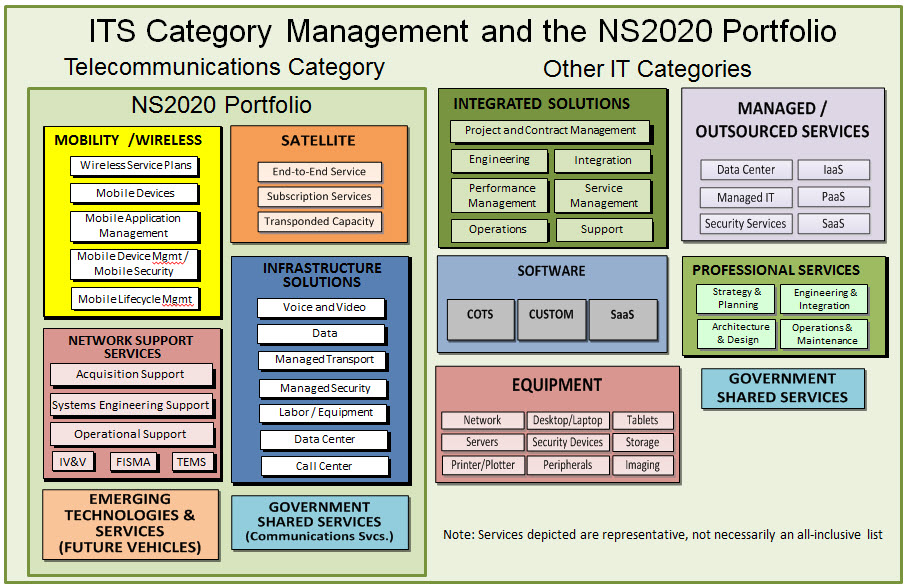(This blog post is part of a multi-week series reviewing data and trends from GSA’s IT acquisition vehicles for FY15. Read previous posts at http://gsablogs.gsa.gov/technology/)
As the federal government moves toward cloud computing in order to increase mission agility and cost effectiveness, GSA is establishing a comprehensive IDIQ cloud computing contract that will serve as a one-stop shop and an improved way to buy cloud. This contract will serve as a single procurement source for all things cloud, with flexibility so as to incorporate valuable cloud services and technologies that emerge over its lifecycle.
Through interactions with federal stakeholders, we have identified common barriers that government agencies face during implementation of their cloud computing projects. This insight supports the foundation of the approach GSA is taking in this endeavor.
The Value of Strong Partnership
To further this customer engagement, GSA is partnered closely with DoD’s Defense Information Systems Agency (DISA) through a Memorandum of Agreement, addressing in part how this comprehensive cloud computing contract can:
- Support various levels of DoD’s rigorous security requirements and accommodate other buyers with similar security needs;
- Best suit the government’s need to effectively budget while still leveraging the flexibility of the cloud; and
- Establish a cloud computing contract that is as attractive as possible for DoD and other federal consumers.
Through the continuing DISA/GSA partnership we have identified and addressed over 200 DoD requirements and desirable cloud contract vehicle characteristics. Our careful adjudication of these requirements ensures that we’re creating a stronger, best-in-business contract.
Collecting Input from the Other Side
Customer insights, such as those from DISA, have helped GSA to serve its partners better but they don’t tell the whole story. GSA needed input from stakeholders on the other side – the vendor side – of the contract to get the full picture, so we sought feedback from cloud computing vendors who provide the services this contract needs.
The CCS PMO released a Request for Information (RFI) on February 11, 2015 to solicit insights from both government and industry. The RFI was part of a larger market research effort to determine the current state of cloud contract capabilities across the federal government.
We asked members, particularly of the vendor community, a variety of questions ranging from the challenges that they face in selling cloud services to the government to the types of cloud products and services that need to be offered in the future. Respondents were also asked if their companies see value to the government if GSA creates a new cloud contract to replace the expiring IaaS BPA.
Some specific questions were:
- Given that cloud products and services are rapidly changing, what process or structure would your company propose for the acquisition contract to keep current with industry?
- How would you suggest that awarded solutions be “updated” based on a technology change and pricing?
- What would you propose as the easiest and most cost-effective way for government to offer cloud solutions to federal agencies?
- Can GSA modify or change how it buys and sells cloud services to be more consistent with how solutions are structured and sold commercially within the limitations of the FAR?
Incorporating Feedback
There were a total of 72 respondents to the RFI, most of which were vendors. A few major response themes included:
- Common barriers to cloud sales are security requirements, inflexible pricing structures and long procurement delays;
- The need for professional services to be included in the same vehicle as the cloud offering;
- A desire for on-demand, subscription or “Single CLIN” purchasing programs; and
- The need for flexibility to make changes and modifications to the offerings as cloud technologies evolve.
A strong 72% of respondents were in favor of GSA creating a new cloud IDIQ contract to replace the expiring IaaS contract.
Moving Forward
In support of its mission and priorities and to build a better contract vehicle, GSA is committed to using the insights learned from both vendor responses to the RFI and from its strong partnerships. Understanding customer needs and service provider insights before building the contract ensures GSA is facilitating the federal government’s most critical achievements in the rapidly developing landscape of cloud computing. Stakeholders will see the fruits of these labors when the cloud computing IDIQ draft RFP is released by FY16’s end, at which time we’ll look forward to your contributions by way of feedback and input.
Please follow us on Twitter @GSA_ITS to join the conversation.
